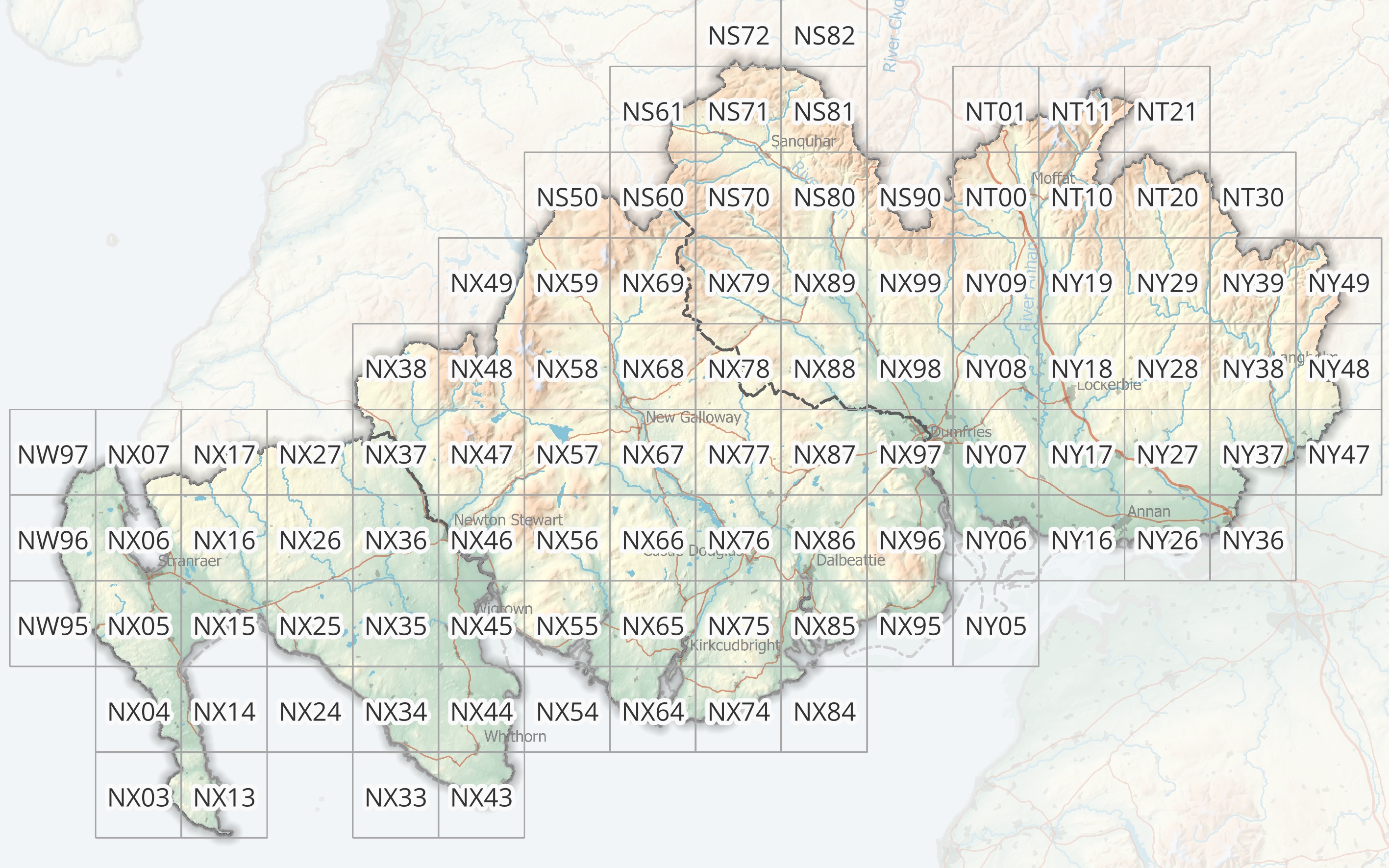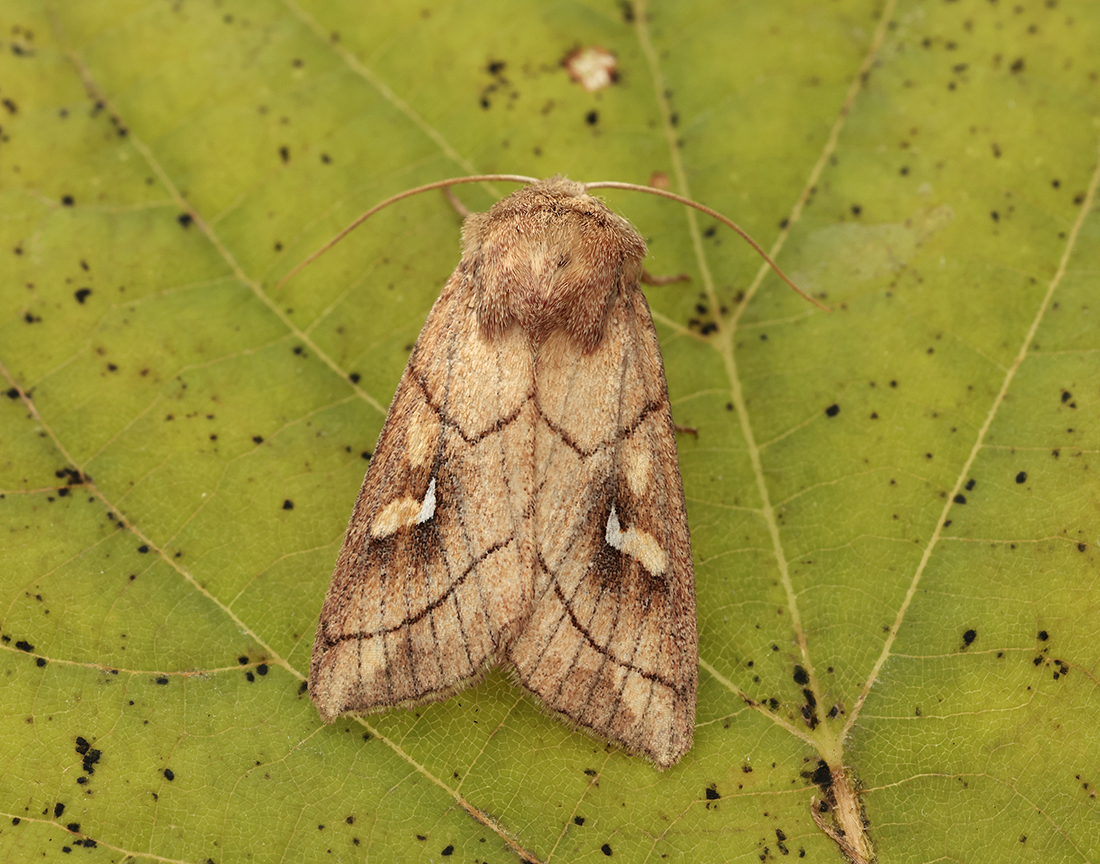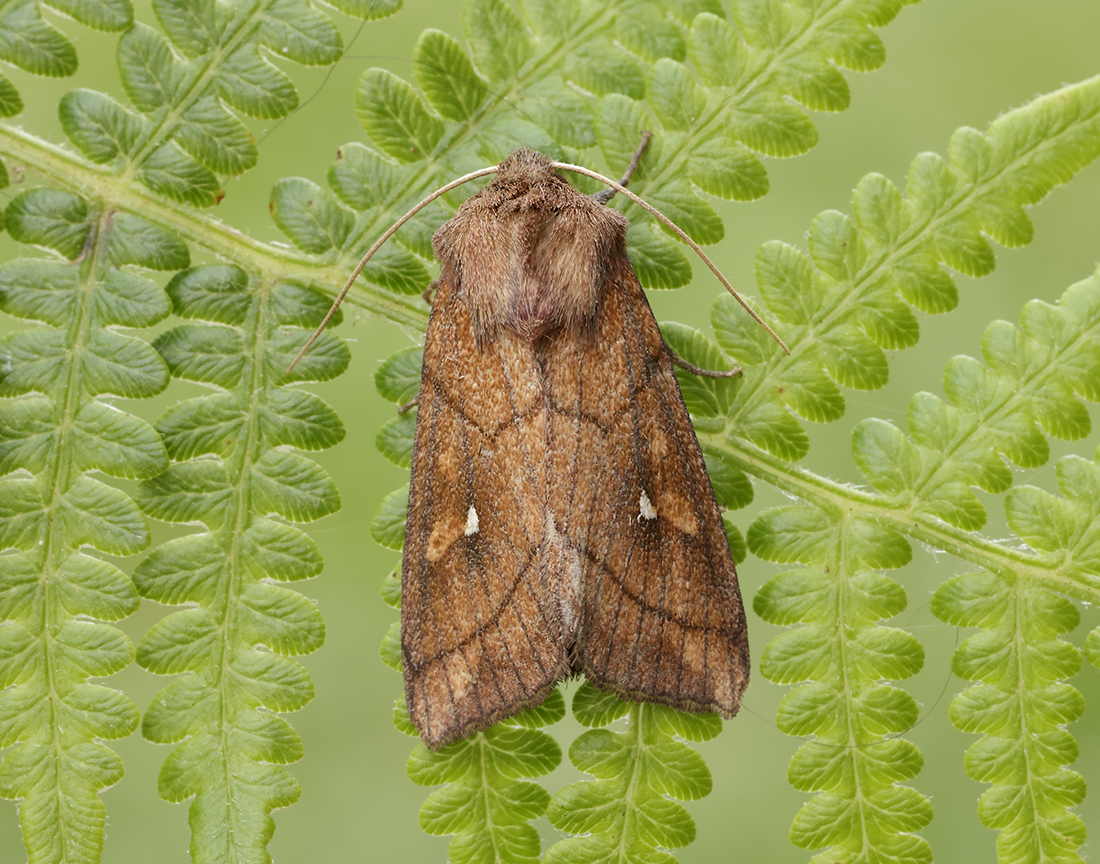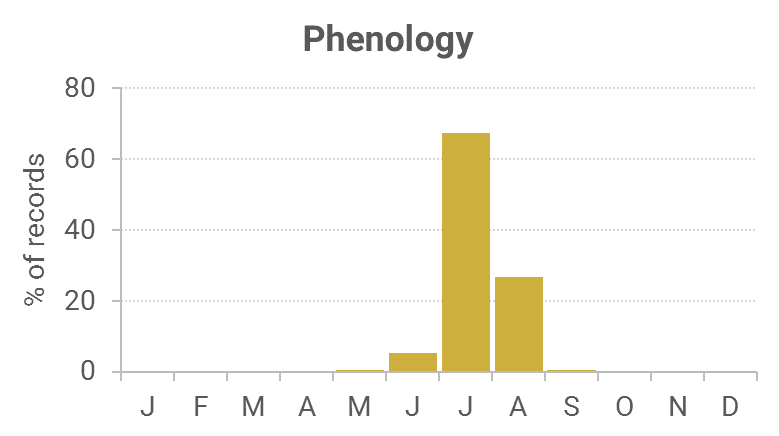Identification
Unmistakable. The tear-shaped white mark by the kidney mark is diagnostic.
Recording Method.
Attracted to light, also comes to sugar and flowers.
Life cycle
One generation. Overwinters as a small larva during August to May, feeding at night. Pupation takes place in an underground cocoon.
Larval foodplants
Grasses, including Common Couch and Cock’s-foot.
Habitat
A wide variety of grasslands, including urban gardens, rough grassland area and woodland rides and edges.
History
Lennon (1863) stated that it was not common, but that it had occurred at Terregles (VC72). Douglas Robinson (1870-71) had found it not rare at sugar during July on Almorness (VC73). K. J. Morton of Edinburgh (1900) whilst on a visit in July 1899 to Wigtownshire had found this species in the Monreith area. Gordon (1913) had found it to be locally common at sugar and flowers in gardens around Corsemalzie (VC74); also, several were found on ragwort at Glenluce and it was common at Portpatrick. Earliest date was 3rd July 1905.
Sir Arthur Duncan (1909-84) during his lifetime had found it at Closeburn, Tynron and Castlehill, Dumfries (all VC72). Archibald Russell (1944) listed it as occurring near Gatehouse of Fleet (VC73) during the years 1942-43.
During 1974-80 five of the seven Rothamsted stations recorded it although records were quite small; Penninghame (VC74) and Mabie Forest (VC73) not catching it at all. Many records from Kirkton during 1992-2000 and likewise from Mersehead RSPB in 1996. Other scattered records from various sites.







